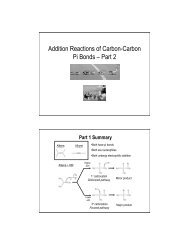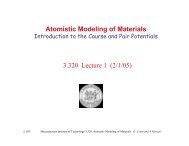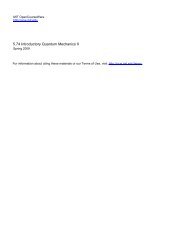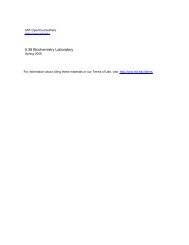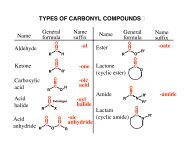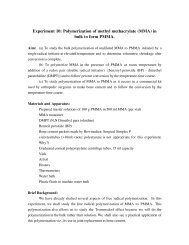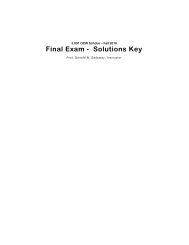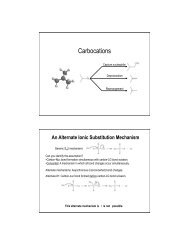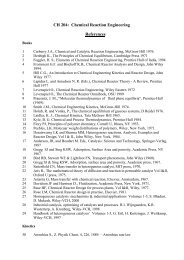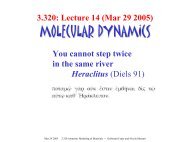Lab 3: Handout Quantum-ESPRESSO: a first principles code, part 2.
Lab 3: Handout Quantum-ESPRESSO: a first principles code, part 2.
Lab 3: Handout Quantum-ESPRESSO: a first principles code, part 2.
Create successful ePaper yourself
Turn your PDF publications into a flip-book with our unique Google optimized e-Paper software.
MIT 3.320 Atomistic Modeling of Materials Spring 2005<br />
5<br />
Problem 1-1<br />
The default is alat , which means that you are using Cartesian coordinates<br />
and everything is scaled by celldm(1).<br />
In the case of HCP , it is easier to express coordinates with respect to<br />
crystal axes, which are a, b, and c in the figure. This way you don't need to<br />
change the atomic coordinates accordingly whenever you change celldm<br />
(3).<br />
Lines 33<br />
This is k-point information. One thing to keep in mind is since the unit<br />
cell is longer in the c direction, a sparser k-mesh can be used in that<br />
direction.<br />
You should find the correct k-point grid yourself. <br />
There are two scripts, one for FCC and the other for HCP. It should be<br />
straightforward to check k-point convergence using these scripts.<br />
Co.FCC.scf.j<br />
Co.HCP.scf.j ( fixed c/a ratio )<br />
To get total energy vs. k-point mesh, ( e.g. a = 4.74 )<br />
$ grep ! Co.FCC.4.74.30.250.*.out | cut c 2425,6390 > ksum.30.250<br />
To get total energy vs. lattice parameter,<br />
$ grep ! Co.FCC.*.30.250.1<strong>2.</strong>out | cut c 1215,6390 > esum.30.250.12<br />
If you want to do something more complex, refer to<br />
/home/lee0su/3.320/LAB3/getE.sh<br />
Make any necessary changes for your own purpose.<br />
Problem 1-2<br />
To change a and c independently, use<br />
Co.HCP.covera.scf.j<br />
The script is almost the same as Co.HCP.scf.j and self-explanatory.



